
 |
|
Friday I tasted life. It was a Mammoth morsel.
A Circus passed the house—
still I feel the red in my mind though the drums are out.
The Lawn is full of south and the odors tangle,
and I hear to-day for the first time
the river in the tree.
—Emily Dickinson
|
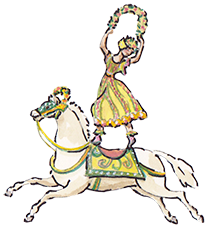 |
 |
Early parades were holidays.
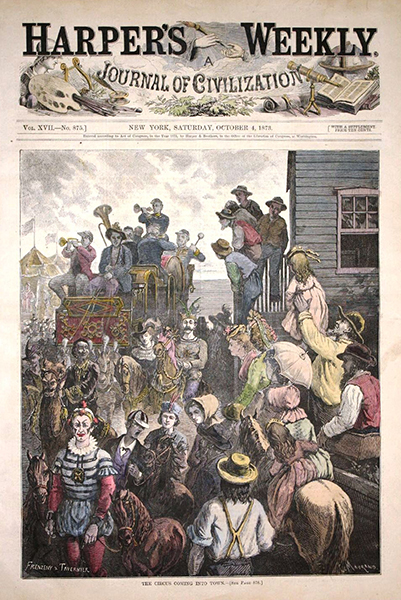 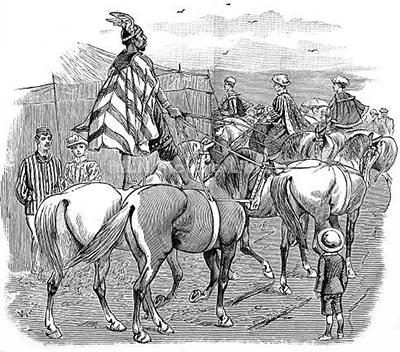 In the early 19th century circus performers put on their simple costumes as they arrived at a town. These parades were modest, a few wagons pulled by four horses, a small troupe, no band, no menagerie. In the early 19th century circus performers put on their simple costumes as they arrived at a town. These parades were modest, a few wagons pulled by four horses, a small troupe, no band, no menagerie.
This tradition grew into the spectacular parades that provided everyone's first glimpse of the circus.
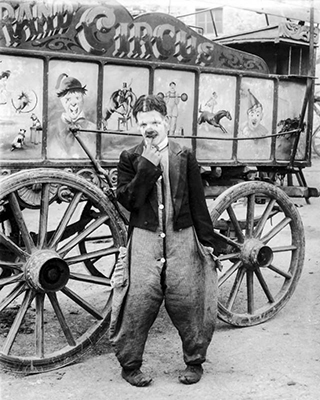 Towns would close down, both schools and businesses, with everyone crowding the streets to see the parade. Kids would try to join the parade and did handstands beside it. Towns would close down, both schools and businesses, with everyone crowding the streets to see the parade. Kids would try to join the parade and did handstands beside it.
Parents or ministers might refuse to let others buy tickets, and In some towns blacks were not allowed in the tent. But everyone could see the parade.
|
| |
|
|
| |
By the middle of the 19th century the parades were extravaganzas.
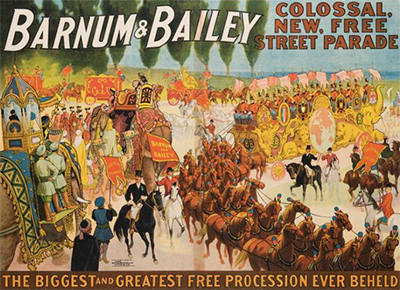 Large circuses paraded carved and painted wagons, clowns, acrobats, jugglers, riders in glitzy costumes, bedecked horses, a brass band, a calliope, and the menagerie in cages. Elephants led, if the circus could afford them. Barnum needed 14 horses to pull the hippo cage. Large circuses paraded carved and painted wagons, clowns, acrobats, jugglers, riders in glitzy costumes, bedecked horses, a brass band, a calliope, and the menagerie in cages. Elephants led, if the circus could afford them. Barnum needed 14 horses to pull the hippo cage. 

|
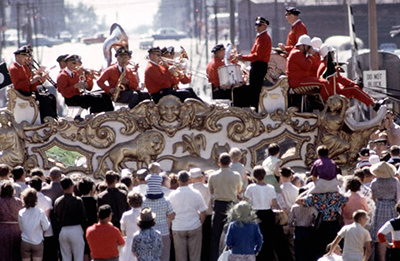
When circuses hopped trains and just came to large towns and cities, parades ramped up even more. Instead of running along side the parade, kids had to be on their fathers' shoulders to see over the crowd. Pyrotechnics, torches, and multiple bands were added to night parades. One Barnum parade stretched for three miles. It had a 30' Temple of Juno, 12 golden chariots, knights in shining armor, and 100 cages.
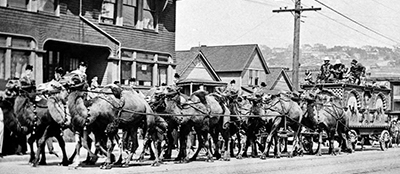 |
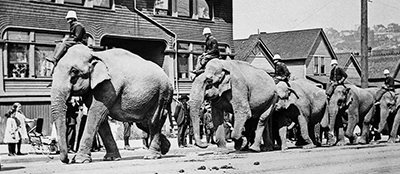 Small towns that hosted small circuses had, of course, smaller parades. Small towns that hosted small circuses had, of course, smaller parades.
The famous Emmett Kelly was inspired to become a clown by the Mighty Haag Circus parade, with one clown, one tiger, and a few other acts.
1899 Barnum and Bailey parade!
Less than a minute, parade in New York, 40s or 50s |
|
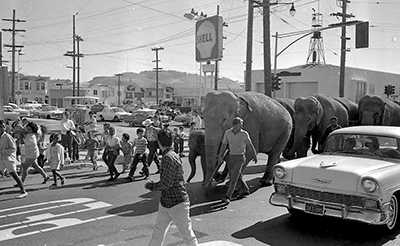 Parades were phased out. Parades were phased out.
There were more accidents in the parades than in the shows, and performers had no time to rest when parades preceded shows. Besides, why buy a ticket when you've already experienced all this? Barnum abandoned the parades in Europe as they were proving counter productive. Ringling stopped parading in America in 1919.
The parade moved inside the tent to the hippodrome and became the spec: some specs were 30 minutes, Ringling's was 90 minutes, or half the show. The specs were theatrical, telling stories such as Joan of Arc.
|
|
 |
|
Visit the circus museums in Baraboo, Wisconsin, and Sarasota, Florida, to see beautiful circus wagons.
And delve into the Grand Glossary to discover the definition of "spec" and many other circus terms. |
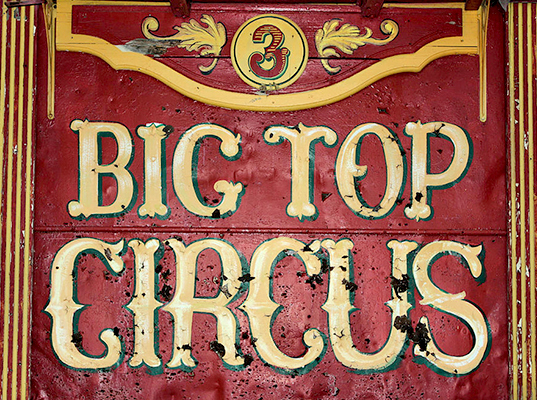 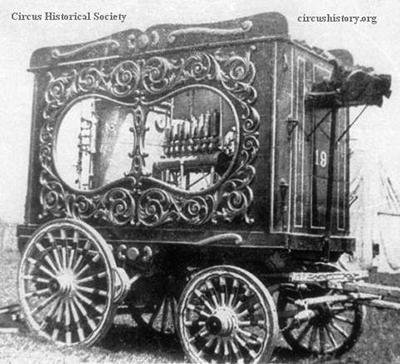 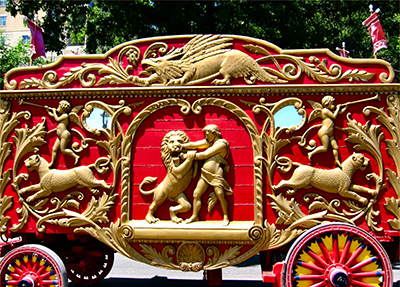
|
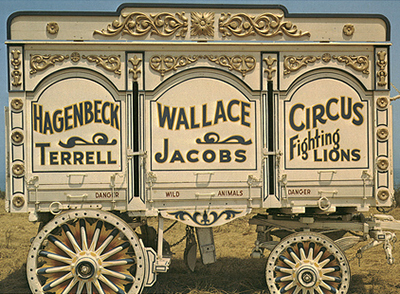 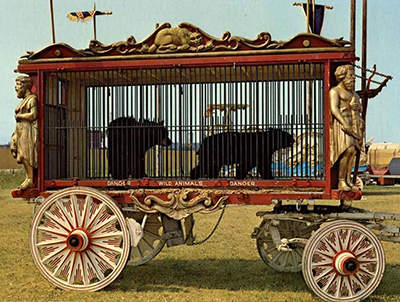 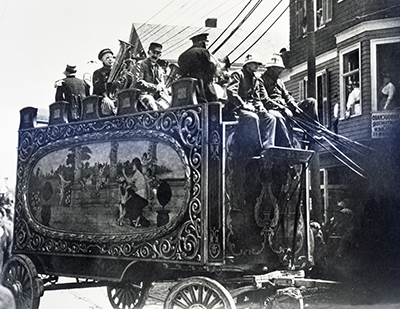 |
|
|
| |
|
 |
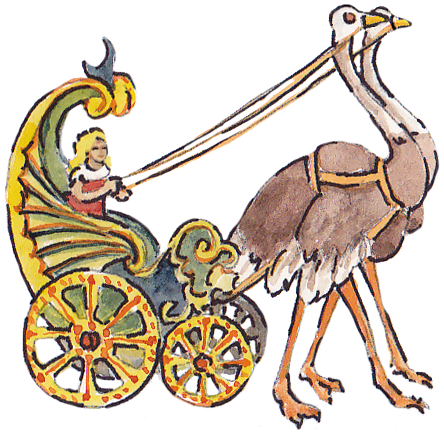



 In the early 19th century circus performers put on their simple costumes as they arrived at a town. These parades were modest, a few wagons pulled by four horses, a small troupe, no band, no menagerie.
In the early 19th century circus performers put on their simple costumes as they arrived at a town. These parades were modest, a few wagons pulled by four horses, a small troupe, no band, no menagerie.  Towns would close down, both schools and businesses, with everyone crowding the streets to see the parade. Kids would try to join the parade and did handstands beside it.
Towns would close down, both schools and businesses, with everyone crowding the streets to see the parade. Kids would try to join the parade and did handstands beside it. Large circuses paraded carved and painted wagons, clowns, acrobats, jugglers, riders in glitzy costumes, bedecked horses, a brass band, a
Large circuses paraded carved and painted wagons, clowns, acrobats, jugglers, riders in glitzy costumes, bedecked horses, a brass band, a 


 Small towns that hosted small circuses had, of course, smaller parades.
Small towns that hosted small circuses had, of course, smaller parades.  Parades were phased out.
Parades were phased out.






